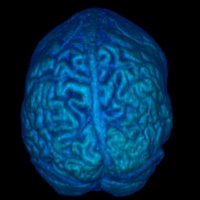Gene Therapy for Parkinson's (Update)

Today's daily Google Alerts for Gene Therapy brings this encouraging story (from CBS News)about the recent success of gene therapy for Parkinson's Disease. The CBS story thus updates this CNN story about Nathan Klein, a man from NY state who was the first recipient of gene therapy for Parkinson's Disease. As that initial story reports, Klein had billions of copies of a gene inserted into his brain. A small hole was drilled into his skull, and a tiny tube "delivered a dose of a virus engineered to ferry copies of the gene into cells of the subthalamic nucleus. The gene will let the cells pump out GABA [a calming chemical]".
The updated CBS story describes Klein's current condition:
"Before the operation, I was a quivering mass of flesh," Klein, 58, tells WebMD. "With my medications, I am like 80 percent or 90 percent better. I am at a point right now where if you didn't know I had Parkinson's disease, you couldn't tell." Klein is delighted with the treatment — even though, as the first patient, he got a much lower dose than did the next 11 patients to be treated. Moreover, none of these 12 patients got the full treatment. As a safety precaution, only one side of their brains was treated. Yet this half-treatment seems to work as well as deep brain stimulation, the best new treatment for Parkinson's disease. And it's safe, reports therapy co-developer Matthew J. During, M.D., DSc, of New York-Presbyterian Hospital and Cornell Weill Medical Center.
During, co-founder of Neurologix Inc., the company that is developing this gene therapy, comments on Klein's progress and the state of the experimental therapy:
During says that Klein's movement problems got about 40 percent better after treatment. Not all patients have done that well. But those who got the highest dose tended to get the most improvement. One year after treatment, nine of the 12 patients showed an average improvement of 37 percent on a measure of Parkinson's disease severity. Five patients had between 40 percent and 65 percent improvement. "We are encouraged the results seem to be maintained over time," During says. "When we look at the other side of the brain, the side we did not treat, we always see worsening of disease. This is a progressive disease. If we hadn't done the treatment, we would expect these patients to be doing significantly worse." These very encouraging results don't prove anything, During notes. That will depend on a large clinical trial in which participants aren't aware of what treatments they receive and some participants receive no active treatment (placebo). A trial like this is in the planning stages.
What is Parkinson's Disease? The National Parkinson Foundation has a useful website here. Here are a few of the facts contained on that site:
What is Parkinson disease?
Parkinson disease is a brain disorder. It occurs when certain nerve cells (neurons) in a part of the brain called the substantia nigra die or become impaired. Normally, these cells produce a vital chemical known as dopamine. Dopamine allows smooth, coordinated function of the body's muscles and movement. When approximately 80% of the dopamine-producing cells are damaged, the symptoms of Parkinson disease appear.
Who gets Parkinson disease?
Parkinson disease affects both men and women in almost equal numbers. It shows no social, ethnic, economic or geographic boundaries. In the United States, it is estimated that 60,000 new cases are diagnosed each year, joining the 1.5 million Americans who currently have Parkinson disease. While the condition usually develops after the age of 65, 15% of those diagnosed are under 50.
Cheers,
Colin


<< Home